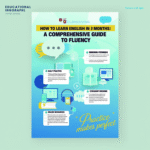In the competitive landscape of graduate admissions, particularly for business schools and advanced degree programs, selecting between the GRE and GMAT represents a pivotal decision that can shape your academic and professional trajectory. We understand the nuances involved in this choice, especially as we navigate the evolving standards of 2025. With both exams undergoing refinements to better align with modern educational demands, we delve deeply into their structures, requirements, and implications to guide you toward an informed selection. Whether pursuing an MBA or another graduate path, understanding GRE vs GMAT ensures alignment with your strengths and goals.
- Understanding the GRE: A Comprehensive Overview for 2025 Aspirants
- Delving into the GMAT: Structure and Essentials for 2025
- Key Differences Between GRE and GMAT in 2025: A Detailed Comparison
- Format and Length
- Scoring Mechanisms
- Cost and Accessibility
- Content Focus and Difficulty
- Acceptance and Program Preferences
- Which Exam Aligns with Your MBA Goals in 2025?
- Preparation Strategies for GRE and GMAT Success in 2025
- Pros and Cons of Choosing GRE in 2025
- Pros and Cons of Choosing GMAT in 2025
- Career Implications: How GRE vs GMAT Impacts Your Future
- Sample Questions and Breakdowns
- Test Day Strategies for Optimal Performance
- Evolving Trends in Standardized Testing for 2025 and Beyond
- Personal Factors in Deciding GRE vs GMAT
- Integrating Test Scores into Your Application
- Common Myths Debunked
- Global Perspectives: GRE vs GMAT Outside the U.S.
- Retaking the Exams: Policies and Advice
- Financial Aid and Scholarships Linked to Scores
- The Role of Coaching and Self-Study
- Impact of COVID-19 Legacy on Testing in 2025
- Future-Proofing Your Choice: Anticipating Changes Post-2025
- Suggestions and Recommendations
- 15 FAQs with Answers
As we explore this comparison, we highlight how each test evaluates critical thinking, analytical skills, and quantitative abilities, yet in distinct ways tailored to different applicant profiles. In 2025, with increasing acceptance of both exams across top institutions, the decision hinges on factors like program preferences, personal aptitudes, and preparation strategies. We emphasize that GRE vs GMAT is not merely about scores but about showcasing your potential effectively.
Understanding the GRE: A Comprehensive Overview for 2025 Aspirants
The Graduate Record Examination (GRE) serves as a standardized test administered by the Educational Testing Service (ETS), designed to assess verbal reasoning, quantitative reasoning, and analytical writing skills. In 2025, the GRE continues to evolve, building on the shorter format introduced in 2023, which reduces testing time to under two hours while maintaining rigor. This adaptation reflects a shift toward efficiency without compromising the depth of evaluation, making it appealing for busy professionals and students alike.
We begin with the exam’s structure. The GRE comprises three main sections: Analytical Writing, Verbal Reasoning, and Quantitative Reasoning. The Analytical Writing section now features a single “Analyze an Issue” task, lasting 30 minutes, where test-takers construct a well-reasoned argument supported by evidence. This change from the previous dual-task format streamlines the process, allowing more focus on quality over quantity.
Verbal Reasoning, split into two sections with 27 questions total (12 and 15 questions respectively), spans 41 minutes. It tests reading comprehension, text completion, and sentence equivalence, emphasizing vocabulary in context and critical analysis of passages. Questions often involve nuanced language, requiring a broad lexicon and the ability to infer meanings from complex texts. For instance, a typical reading comprehension passage might discuss historical events or scientific theories, demanding precise interpretation.
Quantitative Reasoning mirrors this with two sections totaling 27 questions (12 and 15) over 47 minutes. It covers arithmetic, algebra, geometry, and data analysis, with an on-screen calculator available for all problems—a key differentiator from other exams. This section assesses problem-solving under time constraints, including quantitative comparisons and data interpretation from charts or graphs.
Scoring for the GRE in 2025 remains on a 130-170 scale for Verbal and Quantitative sections in one-point increments, with Analytical Writing scored from 0-6 in half-point increments. Total scores range from 260-340, excluding the writing component. We note that scores are valid for five years, providing flexibility for multiple application cycles. Percentile ranks accompany scores, offering context on performance relative to peers.
Regarding costs, the GRE fee stands at approximately $220 in most locations, with variations by country—slightly higher in some regions like China at $231. Additional fees apply for rescheduling ($50) or score reports beyond the initial four free ones ($30 each). Test dates are available year-round at authorized centers or at home via proctored online sessions, with up to five attempts allowed in a rolling 12-month period, spaced 21 days apart.
We observe that the GRE‘s adaptability in 2025 includes accommodations for test-takers with disabilities, such as extended time or screen readers, ensuring inclusivity. Preparation resources abound, from official ETS guides to third-party platforms offering practice tests that mimic the adaptive nature of the exam, where section difficulty adjusts based on performance.
In terms of acceptance, over 1,300 business schools worldwide now recognize GRE scores for MBA programs, a significant increase from previous years. This broad acceptance extends to diverse fields like law, engineering, and humanities, positioning the GRE as a versatile option. We recommend it for applicants with strong verbal skills or those applying to non-business graduate programs, as its format allows demonstration of interdisciplinary competencies.
To illustrate, consider a candidate with a humanities background aiming for an MBA; the GRE‘s emphasis on vocabulary and reading might play to their strengths, potentially yielding higher percentiles. Conversely, for those weaker in verbal but strong in quant, the calculator eases calculations, reducing errors in complex problems.
We expand on preparation: Effective study involves building a robust vocabulary through flashcards and reading diverse materials, practicing quantitative problems with real-world applications, and timing essays to hone argumentation. Mock tests are crucial, as they simulate the adaptive format and build stamina.
Delving into the GMAT: Structure and Essentials for 2025
The Graduate Management Admission Test (GMAT), managed by the Graduate Management Admission Council (GMAC), targets business school admissions, focusing on skills essential for management roles. In 2025, the GMAT Focus Edition, launched in 2023, dominates, offering a concise 2-hour-15-minute experience with flexible section ordering, enhancing test-taker control.
We outline the sections: Quantitative Reasoning (21 questions, 45 minutes) evaluates data sufficiency and problem-solving without a calculator, emphasizing logical deduction over computation. Questions involve algebra, geometry, and arithmetic, often in business contexts like profit margins or investment returns.
Verbal Reasoning (23 questions, 45 minutes) assesses reading comprehension, critical reasoning, and sentence correction, testing the ability to evaluate arguments and refine written English. Passages may cover economics, science, or social issues, requiring swift analysis.
The Data Insights section (20 questions, 45 minutes), unique to GMAT, integrates quantitative and verbal skills through data sufficiency, multi-source reasoning, table analysis, graphics interpretation, and two-part analysis. This section uses an on-screen calculator and highlights real-world data application, vital for MBA success.
Scoring in 2025 for the GMAT Focus Edition ranges from 205-805 in 10-point increments, with each section scored 60-90. Percentiles provide comparative insights, and scores remain valid for five years. Unlike the traditional GMAT, the Focus Edition omits the Analytical Writing Assessment, prioritizing efficiency.
Costs include $275 for in-center testing and $300 for online, with rescheduling at $55-$165 depending on timing, and additional score reports at $35 each. Availability is year-round, with up to five attempts in 12 months and a lifetime limit of eight.
We highlight that GMAT scores are accepted by over 7,700 programs globally, with a strong preference in top MBA schools. In 2025, innovations like bookmarking questions for review add flexibility. Accommodations are available, similar to the GRE.
For preparation, we advise focusing on data interpretation through case studies, practicing critical reasoning with logical fallacies, and mastering quant without aids. Official GMAC mocks and prep courses are invaluable.
Key Differences Between GRE and GMAT in 2025: A Detailed Comparison
When evaluating GRE vs GMAT, several distinctions emerge, influencing your choice. We compare them across critical dimensions to provide clarity.
Format and Length
The GRE clocks in at 1 hour 58 minutes, shorter than the GMAT‘s 2 hours 15 minutes. GRE includes Analytical Writing, absent in GMAT Focus, but GMAT introduces Data Insights, absent in GRE. GRE allows a calculator throughout quant, while GMAT restricts it to Data Insights.
Section adaptability differs: GRE is section-adaptive, GMAT question-adaptive within sections. We note GMAT permits section order selection, offering strategic advantages.
Scoring Mechanisms
GRE scores Verbal and Quant separately (130-170 each), totaling 260-340, plus AWA (0-6). GMAT provides a unified 205-805 score, with section subscores. GMAT offers finer granularity at high percentiles, beneficial for competitive programs.
Conversion tools exist for equivalence, but schools evaluate within test norms. In 2025, GMAT‘s precision aids top-tier admissions.
Cost and Accessibility
GRE is generally cheaper at $220 vs. GMAT‘s $275-$300. Both offer at-home options, but GMAT‘s global centers are more extensive for business-focused regions.
Content Focus and Difficulty
GRE emphasizes vocabulary and straightforward math, suiting liberal arts backgrounds. GMAT stresses analytical reasoning and data, aligning with business acumen. Difficulty is subjective; GRE verbal can challenge non-native speakers, GMAT quant tests logic deeply.
We provide examples: A GRE quant question might ask for area calculation with calculator aid, while GMAT data sufficiency requires determining if statements suffice without solving.
Acceptance and Program Preferences
In 2025, nearly all top 50 U.S. MBA programs accept both, but GMAT submissions outnumber GRE at elite schools like Harvard (GMAT preferred for higher scores). GRE submission rates rose to 35-45% at top-10 programs, with schools like Stanford accepting either since June 2021.
For non-MBA, GRE dominates; for pure business, GMAT edges out.
| Aspect | GRE | GMAT Focus Edition |
|---|---|---|
| Total Time | 1h 58m | 2h 15m |
| Sections | AWA, Verbal (2), Quant (2) | Quant, Verbal, Data Insights |
| Calculator | Yes, all Quant | Yes, Data Insights only |
| Score Range | 260-340 + 0-6 AWA | 205-805 |
| Cost | ~$220 | $275-$300 |
| Validity | 5 years | 5 years |
| Adaptive Type | Section-level | Question-level |
Which Exam Aligns with Your MBA Goals in 2025?
For MBA admissions, GRE vs GMAT boils down to program fit and personal strengths. We analyze trends: Poets&Quants data shows 17 of 54 schools received more GRE submissions in 2024-2025, nearly double prior years. Yet, GMAT remains preferred at 90% of U.S./European schools, with average scores at top programs like Wharton (GMAT 733, GRE 324).
Schools like Harvard accept both but note GMAT‘s business alignment. We suggest checking specific programs; ETS lists 1,300+ GRE-accepting MBAs, GMAC claims 7,700 for GMAT.
If targeting consulting or finance post-MBA, GMAT signals quant prowess. For tech or diverse fields, GRE suffices.
Average scores at top schools:
- Stanford: GMAT 738, GRE 329
- Harvard: GMAT 730, GRE 326
- Wharton: GMAT 733, GRE 324
We recommend taking diagnostics for both to gauge fit.
Preparation Strategies for GRE and GMAT Success in 2025
Effective preparation is key in GRE vs GMAT. We outline tailored approaches.
Diagnostic Testing
Start with official mocks to baseline scores. For GRE, ETS provides two free tests; GMAC offers similar for GMAT.
Study Plans
Allocate 2-3 months: GRE focus on vocab (5,000 words via apps like Magoosh), quant practice with calculator. GMAT emphasize data sufficiency, critical reasoning through Manhattan Prep books.
Daily routines: 1-2 hours verbal, 1 hour quant, weekly full tests.
Resources
- GRE: Princeton Review, GregMat videos for tips.
- GMAT: e-GMAT for adaptive learning, Kaplan for strategies.
Incorporate error logs, reviewing mistakes deeply.
Time Management Tips
Practice under timed conditions; for GMAT, master skipping; for GRE, use calculator efficiently.
We stress consistency, aiming for 80th+ percentiles.
Pros and Cons of Choosing GRE in 2025
Pros:
- Broader acceptance across programs.
- Calculator in quant reduces errors.
- Shorter test time.
- Lower cost.
- Favors verbal strengths.
Cons:
- Heavy vocabulary burden.
- Less preferred for pure MBA.
- Broader content may dilute focus.
Pros and Cons of Choosing GMAT in 2025
Pros:
- Tailored for business, signaling commitment.
- Data Insights prepares for real-world analysis.
- Finer scoring at top levels.
- Preferred by recruiters in finance/consulting.
Cons:
- No calculator in quant.
- Higher cost.
- Longer preparation for data section.
- Limited to business programs.
Career Implications: How GRE vs GMAT Impacts Your Future
In 2025, exam choice influences perceptions. GMAT often correlates with higher starting salaries in MBA cohorts, per GMAC studies, due to quant emphasis. GRE supports pivots to non-business careers.
We examine case studies: A tech professional scoring 330 on GRE gained admission to Kellogg MBA, leveraging verbal skills. A finance analyst with 720 GMAT secured McKinsey offers.
Long-term, both yield similar outcomes if scores are competitive.
Sample Questions and Breakdowns
To demystify, we present examples.
GRE Verbal Sample: “The scientist’s theory was (i) ________, but its implications were (ii) ________.” Options: (i) innovative, (ii) profound.
Explanation: Tests synonym understanding.
GMAT Data Insights Sample: Interpret a graph on sales trends, determine correlations.
GRE Quant Sample: Solve for x in 2x + 3 = 7, with calculator.
GMAT Quant Sample: Is data sufficient? Statement 1: x>0; Statement 2: y=2x.
Test Day Strategies for Optimal Performance
We advise arriving early, managing breaks (10 minutes optional), and staying hydrated. For online tests, ensure stable internet.
Post-test, review unofficial scores immediately for GRE Verbal/Quant, GMAT full score.
Evolving Trends in Standardized Testing for 2025 and Beyond
In 2025, test-optional policies persist at some schools (e.g., NYU Stern waivers), but GRE and GMAT remain staples. AI integration in prep tools enhances personalization.
We predict further shortening and digital enhancements.
Personal Factors in Deciding GRE vs GMAT
Assess strengths: Verbal? GRE. Quant/logic? GMAT. Time constraints? GRE‘s brevity.
Budget: GRE saves money.
Integrating Test Scores into Your Application
We emphasize holistic applications: Pair high scores with strong essays, recommendations. Convert scores for comparison using ETS/GMAC tools.
Common Myths Debunked
Myth: GMAT is always harder. Reality: Depends on skills.
Myth: Schools prefer GMAT. Reality: Many are neutral.
Global Perspectives: GRE vs GMAT Outside the U.S.
In Europe/Asia, GMAT dominates for MBAs (e.g., INSEAD), but GRE gains traction.
Costs vary: GRE $231 in India, GMAT $275.
Retaking the Exams: Policies and Advice
Both allow retakes; wait 21 days for GRE, 16 for GMAT. We suggest retaking if below target, focusing on weak areas.
Financial Aid and Scholarships Linked to Scores
High GMAT scores unlock MBA scholarships at schools like Booth. GRE similarly for broader programs.
The Role of Coaching and Self-Study
We compare: Coaching (e.g., Veritas) for structure, self-study for flexibility. Hybrid often best.
Impact of COVID-19 Legacy on Testing in 2025
At-home options persist, increasing accessibility.
Future-Proofing Your Choice: Anticipating Changes Post-2025
Expect more digital features, potential AI proctoring.
Suggestions and Recommendations
We recommend starting with diagnostic tests for both GRE and GMAT to identify the better fit. If your strengths lie in verbal and you seek versatility, opt for the GRE. For business-specific paths with strong analytical skills, choose the GMAT. Allocate at least three months for preparation, incorporating official resources and practice exams. Consult admissions counselors at target schools for preferences. Finally, balance test prep with other application elements like work experience and essays for a comprehensive profile.
15 FAQs with Answers
- What is the main difference between GRE and GMAT in 2025?
The GRE is broader for various graduate programs with a calculator in quant, while GMAT is business-focused with Data Insights and no quant calculator. - How long is the GRE exam in 2025?
The GRE lasts 1 hour 58 minutes. - What is the cost of the GMAT in 2025?
The GMAT costs $275 at test centers and $300 online. - Do all MBA programs accept GRE scores?
Most top MBA programs accept GRE, but some prefer GMAT; check specific schools. - Is the GMAT harder than the GRE?
Difficulty varies; GMAT quant is tougher without a calculator, GRE verbal requires more vocabulary. - How are GRE scores calculated?
Verbal and Quant range 130-170 each, AWA 0-6. - Can I use a calculator on the GMAT?
Only in the Data Insights section. - How many times can I take the GRE in a year?
Up to five times in 12 months, with 21 days between attempts. - What is the validity period for GMAT scores?
Five years. - Which test is better for non-MBA programs?
The GRE due to wider acceptance. - How do I prepare for GRE verbal?
Build vocabulary, practice reading comprehension, and text completion. - What is Data Insights on the GMAT?
A section testing integrated reasoning with data from multiple sources. - Are there test waivers for MBA in 2025?
Some schools like MIT Sloan offer waivers. - How to convert GRE to GMAT scores?
Use official conversion tools from ETS or GMAC. - Which test has more adaptive questions?
GMAT is question-adaptive, GRE section-adaptive.




















